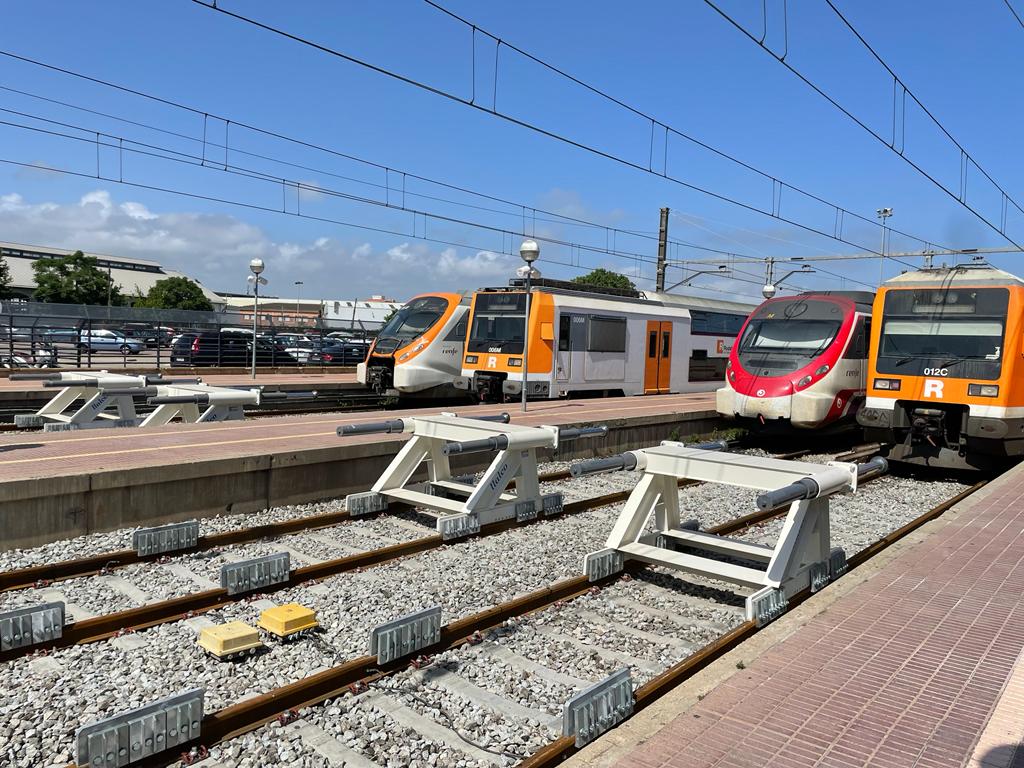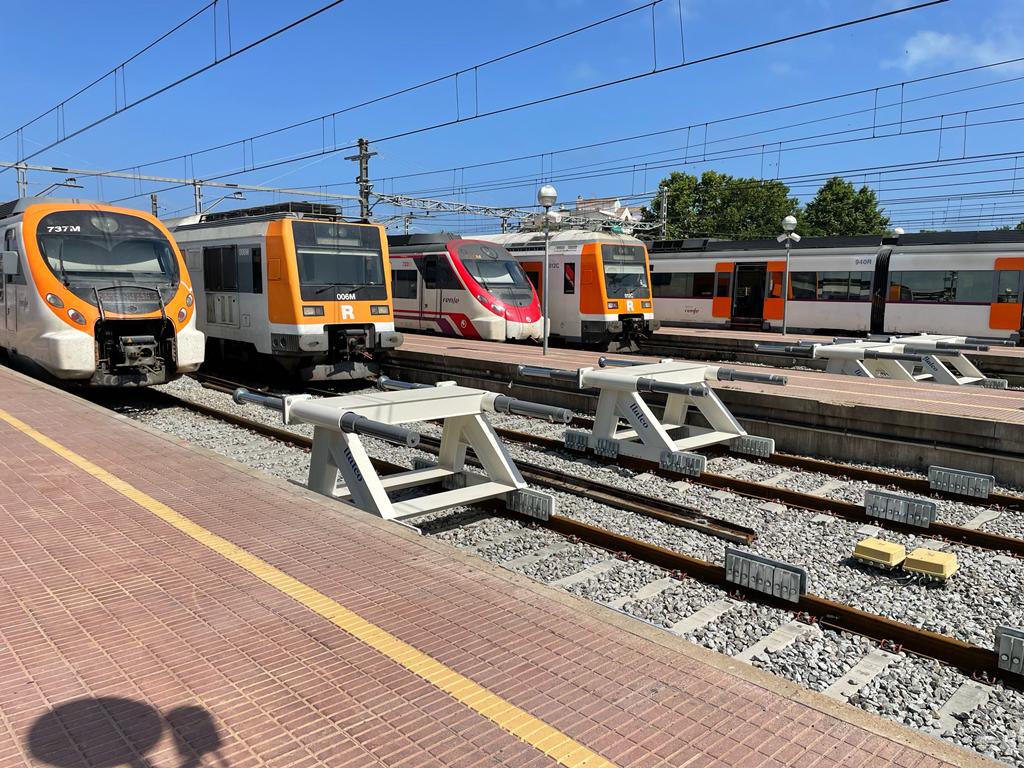World leading technology in railway buffer stops
The protection of track ends with safety elements in the event of an impact is increasingly an essential element. Something that undoubtedly demonstrates this fact is the exemplary involvement that ADIF is taking in this type of system, being a pioneering institution worldwide and publishing the first Buffer Stop Regulations in Spain NAG5200_ED1 at the beginning of 2022, to regulate the installation of devices for impact attenuation in track ends with passenger trains. With less than 1 year of life, this regulation is already a reference for national and international operators.

In addition to complying with the new regulations, the innovation of the design teams in this type of system is very important. There are many variables to take into account to provide the most appropriate technology in each case. For example, fixed buffer stops allow maximum use of the track with the need to carry out civil works, while sliding buffer stops are much more versatile as long as there is enough space to allow them to slide.
Another very important aspect to take into account is the use of gas-hydraulic capsules in sliding buffer stops. The trend to incorporate this type of technology in railway buffers is increasing, as shown by the specifications of ADIF, Metro de Madrid, Metro de Barcelona, FGC and FGV, for example. And the fact is that not mounting capsules supposes a clash between two rigid elements that is very difficult to predict accurately with graphs, since it will depend only on the state of the track, humidity, rust, wear, etc. The theoretical acceleration of the buffer stop frame when it comes into contact with the train is infinite, since it suddenly goes from speed 0 to speed of the train. In practice, elastic or plastic deformations of materials occur and this initial deceleration peak is not infinite, but it is very high. In addition, as it does not have a damping element, it is very likely that braking will occur jerkily.
The gas-hydraulic capsule solution allows a progressive static-dynamic transition, with homogeneous control of deceleration and reduction of the saw effect on the deceleration graph during braking. The gas-hydraulic capsule makes it possible to maintain controlled deceleration with a closed thermodynamic system. The capsule will accelerate the frame between 0 and the speed of the train during the first moments of the impact. In this case, we can obtain graphs of its behavior and it is the most recommended solution for tracks with passenger trains.

Llalco has been designing and manufacturing railway buffers in Spain for more than 30 years, to mitigate damage and dissipate the energy of the train in the event of an impact, protecting people, rolling stock and the track.
Recently, Llalco has developed a new innovative design, consisting of a high-performance sliding gas-hydraulic buffer stop for tracks with passenger trains with reduced sliding distance. On 2022 has been installed at the Arenys de Mar, Mataró, Vilanova i la Geltrú and San Vicente de Calders stations for ADIF in Catalonia.

The key points that stand out with this type of buffer stop are:
- Fast installation in 1 hour:
By means of a railway vehicle or crane truck, the buffer stop is positioned at its installation point during the maintenance window.
- Does not require civil works:
The great advantage of this type of solution is not having to carry out civil works. In addition to cost savings, it is a great logistical advantage since many stations must modify train routes during works, affecting traffic and users.
- Removable:
Both to carry out maintenance work on the track and to relocate it to another point, it is a great advantage over other alternatives.
- Minimum track occupancy with cumulative system of friction shoes:
The cumulative system of friction shoes, combined with gas-hydraulic technology, allows the braking force to be added gradually to keep the initial deceleration peaks as low as possible and reduce the sliding distance to a minimum.
- Deceleration control with gas-hydraulic technology:
This point is the most important at the safety level. Gas-hydraulic technology controls frame acceleration and dramatically reduces initial deceleration spikes and braking curve sawing. Gas-hydraulic technology is a shock absorber system that should be taken into account in at least all those tracks with the presence of passenger trains.
In conclusion, more and more railway infrastructures worldwide are becoming aware of the importance of protecting track ends with safety systems for shock absorption. Innovation is a key element to develop solutions adaptable to each project that allow improvement in safety with the least possible impact on existing infrastructures.
Do not hesitate to contact us for more details about this or any other Llalco model by calling +34 91 742 30 57 or writing to us at llalco@llalco.com


